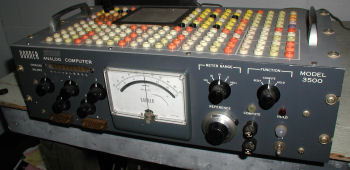Sometimes it is useful to have a sine/cosine generator.
The classical thinking is to place two integrators in series
and a unity inverter completing the loop.
You'd start with a non-zero value on one of the integrators.
When you try this, you'll see that it seems to die off
in a short amount of time.
At first, you think it just needs more gain so you try
increasing the gain of the unity inverter.
To your disappointment, you find that all it does is
makes the oval instead of a circle when displayed
on a XY scope.
So, what is the problem?
It is phase error. The resistor/capacitor/amplifier never
gets exactly a 90 degree shift. It might be 89.99 but not 90.
This causes the oscillation to die off.
When I did a rose engine demonstration at the Maker Faire,
I needed sine/cosine that would last for 10 of 15 minutes
to plot on an XY plotter.
I found that one could correct for the phase loss and if balanced
well, the oscillation would nether increase or decrease
for an hour or more.
I'd take a small amount of the divided down voltage coming
from the inverting amplifier and add it to the summing
junction of the second integrator.
This would pull the phase forward a little, making up for
the lost phase.
I watched the drift on a differential scope and was able
to make it hold constant for a long time.
A better method would be to use a simple limiter
before the summing junction, where you have the
input coming from the inverter.
This could be a couple diodes and a resistor.
Dwight

